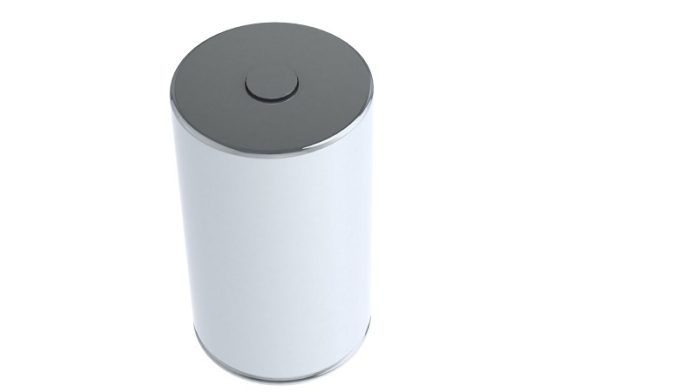
Graphic rendition of the outside of the 4680 Tesla Cell. Credit: Jonas Gorsch.
Electric vehicle (EV) batteries power millions of cars, but their inner workings remain a mystery.
Two major companies—Tesla and BYD—lead the EV market, with Tesla dominating in North America and Europe, while BYD is the top brand in China.
However, both companies share limited information about their batteries. To uncover more details, a team of researchers took apart one battery from each company and analyzed their structure and performance.
The study, published in _Cell Reports Physical Science_, revealed key differences between Tesla’s **4680 battery cell** and BYD’s **Blade battery cell**.
The researchers found that Tesla’s battery focuses on **high energy storage and strong performance**, while BYD’s battery is designed for **better space efficiency and lower costs**.
Interestingly, they discovered that BYD’s battery is **more efficient when it comes to managing heat**, which is important for safety and long-term use.
**Surprising discoveries inside the batteries**
The research team, led by Jonas Gorsch from RWTH Aachen University in Germany, examined multiple aspects of each battery, including their mechanical design, material composition, and how they handle heat and electricity.
They also estimated the cost of materials used in each.
One of the biggest surprises was that **neither battery contained silicon in its anode**—a material often used to boost energy storage. Since silicon is commonly discussed in battery research, the team expected to find it in Tesla’s battery, but it was absent.
Another major finding was that the two batteries charge and discharge at different speeds. This means they store and release energy differently, affecting how fast a car can recharge.
BYD’s Blade battery has a **unique way of keeping its electrode sheets in place**. Instead of using the usual method, BYD stacks and laminates the edges of the separator between the anode and cathode. Meanwhile, Tesla’s battery uses a **special binder** to hold its electrode materials together—something rarely seen in the industry.
**Unexpected Similarities**
Despite their differences, the batteries also had **some surprising things in common**. Both Tesla and BYD use **laser welding** to connect their thin electrode foils, unlike most manufacturers, who use ultrasonic welding.
Even though the BYD Blade battery is much larger than Tesla’s 4680 cell, both batteries have a similar percentage of passive components, like housing and connectors.
The researchers believe their findings will help improve EV battery design. Their study provides valuable data for both scientists and manufacturers, offering a **benchmark for large-format battery cells**.
More research is needed to understand how design choices impact battery life and performance, but these discoveries could help shape the future of EV technology.